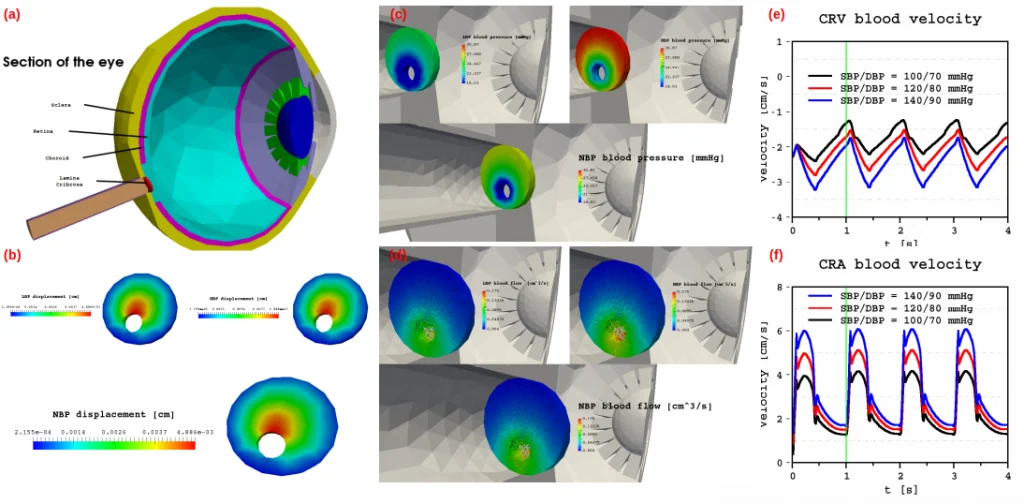
New York: the Financial District, Battery Park, and the southern tip of Manhattan Island, where the Hudson and East Rivers converge
Roadmap and Recent Achievements
The HiDALGO2 project is progressing steadily, with significant advancements in urban building energy simulations and CI/CD methodologies. The recent paper of our partner, Cemosis, Ktirio Urban Building: A Computational Framework for City Energy Simulations Enhanced by CI/CD Innovations on EuroHPC Systems, has been accepted for the PPAM 2024, where HiDALGO2 organises a workshop entitled “Workshop on advancements of global challenges applications” (AGCA event). This work highlights the critical role of the building sector in the European Union, emphasising the need for improved energy efficiency and reduced greenhouse gas emissions. The EU’s Horizon 2050 initiative sets ambitious renovation goals, and the CoE HiDALGO2 project supports these through the Urban Building pilot application. This application leverages high-performance computing solutions and advanced CI/CD methodologies to streamline simulation and deployment across EuroHPC JU supercomputers. The Urban Building pilot is also a demonstrator for the French exascale initiative NumPEx and researchers are part of the Exa-MA project on Methods and Algorithms.
Team
The current team is composed as follows:
- Vincent Chabannes @vincentchabannes – HPC, modeling and simulation, gui, design
- Gwennolé Chappron @GwennoleChappron – Building energy modeling and simulation
- Javier Cladellas @JavierCladellas – Data analyst, modeling and simulation
- Patrick Lemoine @lemoinep – Parallel task and GPU programming
- Maryam Maslek @maslekm – Meteorology modeling, data analysis and transfer
- Philippe Pincon @Philand – Modeling and simulation
- Christophe Prud’homme @prudhomm – Leader, HPC, modeling and simulation, design
They collaborate closely with Pierre Alliez’s team at INRIA (@palliez) on the computational geometry aspects of the project, leveraging the CGAL library for advanced modeling and simulation.
Summary of Advances
1. Context and Objectives:
- Transition from Building Energy Modeling (BEM) to City Energy Modeling (CEM) to accurately assess energy performance, identify energy savings, compare renovation strategies, and ensure optimal building management.
- The building sector in the EU contributes significantly to GHG emissions and energy consumption, with Horizon 2050 objectives aiming to double annual energy renovation rates.
2. Objectives:
- Predict energy consumption, thermal comfort, and indoor air quality at both building and urban scales.
- Integrate the building stock with its environment by coupling with the Urban Air Pollution (UAP) model to improve boundary conditions and radiative heat transfer.
- Simulate large scale cities (below the city of New York with a Zoom on Central Park and at the top of the blog a view of the Financial District, Battery Park, and the southern tip of Manhattan Island, where the Hudson and East Rivers converge)

City of New York
3. Current Workflow and Recent Work:
- Updated Ktirio.GUI with weather processing, new graphic controls, and upgraded workflows.
- Improved simulation launches and configurations, initiated automation of city report generation, and developed first models of heating systems.
- Published results of UB simulations in a gallery of buildings and cities with automatically generated reports for city-scale metrics.

4. Performance and Benchmarking:
- Scalability tests on EuroHPC systems showed consistent performance profiles with new features.
- Identified solutions for I/O performance improvements planned for the end of the year.
5. CI/CD Pipeline:
- Complex toolchain for packaging, releasing, and documentation, with HPC benchmarking using Reframe for regression testing.

Next Steps
1. Short-Term Goals (Summer 2024):
- Modeling: Improve city geometry reconstruction, support buildings with more than 10 floors and heating systems, and enhance weather processing in Ktirio.GUI.
- Reporting: Implement multi-scale reporting for energy consumption and comfort indicators.
- Computing/Performance: Add more timing information for better profiling data.
- CI/CD: Add checks for runner status, deploy only if online, and robustify the process.
- Coupling: Add initial support for coupling UB with UAP, supporting HPDA and ML.
- Release: Release the Ktirio Urban Building platform components.
2. Long-Term Goals (End of 2024):
- Modeling: Improve vegetation support, watertight meshes, roof support, LOD2, and building energy simulation.
- Computing/Performance: Initial support for hybrid computing using CPU and GPU, improve I/O performance, and advanced partitioning.
- CI/CD: Robustify workflow, include report processing, and support new EuroHPC systems.
- Coupling: Support two-way coupling using frameworks like MUSCLE3 and pre-processing pipelines for AI and ML applications.
3. Exploitation and Valorization:
- Collaboration with partners like Synapse Concept and Cisco Meraki for data access and deployment of Meraki sensors for validation and data assimilation.
- Preparing a beta test of the platform with potential customers and testing the GUI and simulation workflow.
Summary
The UB pilot within the HiDALGO2 project has made significant progress in urban energy modeling and simulation, including improved workflows, enhanced simulation tools, and established CI/CD pipelines. Future steps focus on further modeling enhancements, performance improvements, robust CI/CD integration, and expanded coupling with other models to support comprehensive urban sustainability and energy efficiency goals.
This blog article was written by our partner, Cemosis and Christophe Prud’homme, Professor in Applied Mathematics at the University of Strasbourg.
You can find it here as well: https://github.com/orgs/feelpp/discussions/2257



